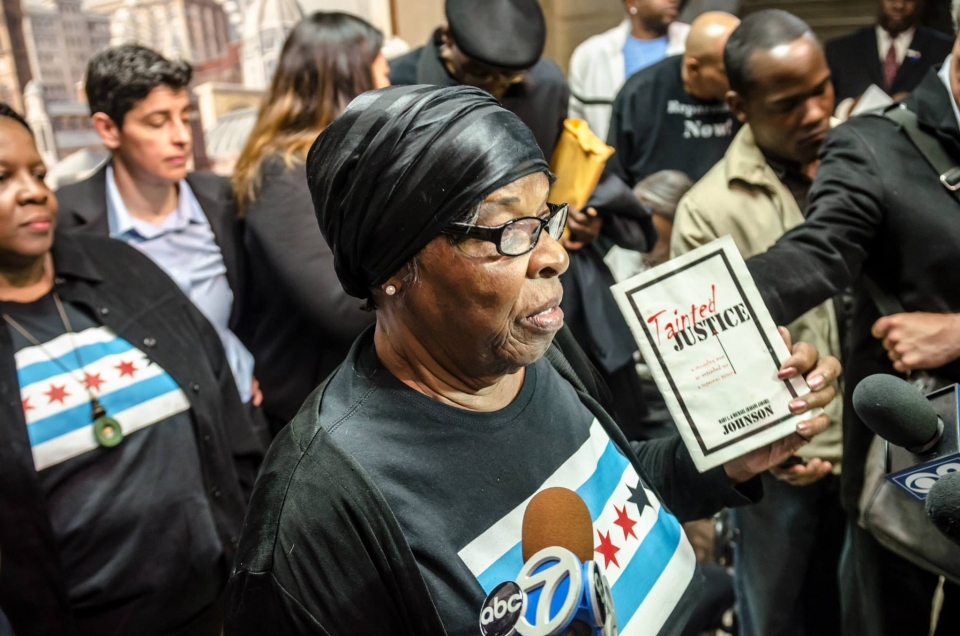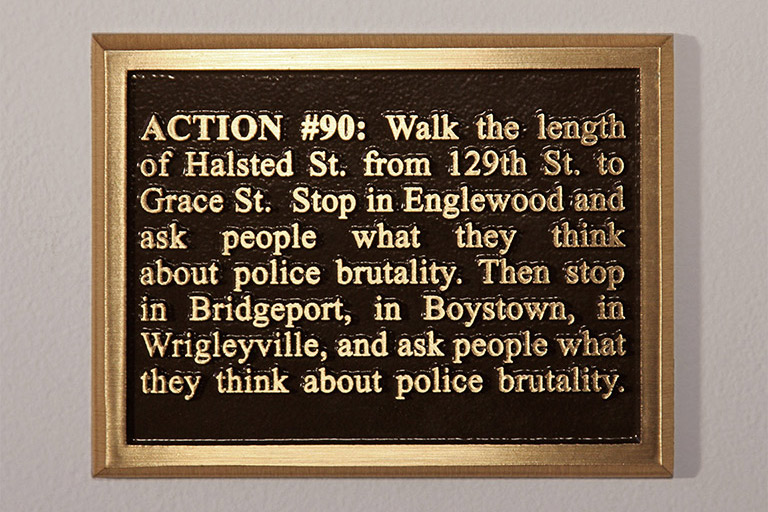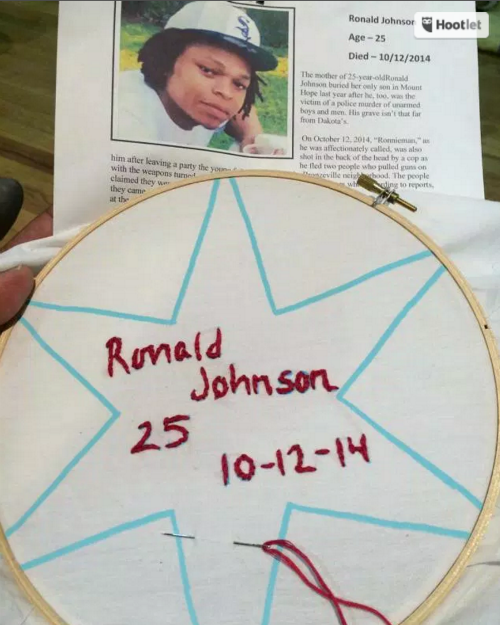
In my 20 plus years working as an artist and a staff member at AFSC, I've seen the power of art to bring people together for education, dialogue, healing, and advocacy.
I've had the privilege to work on art and social change projects that have garnered national attention like Eyes Wide Open and Windows and Mirrors, which vividly illustrated the human cost of war, as well as projects that have a more local focus. I'm based in Chicago, a city with a rich history of artists, scholars, and organizers working together on long-term, local initiatives for social change.
I want to share a couple of recent efforts that I've been involved with that demonstrate how community building through art practice can transform attitudes, culture, and even policy.
Both projects focus on instances when conduct by the Chicago Police Department (CPD) revealed the unequal access to power and resources by marginalized communities—and the propensity of the CPD to use violence against people of color. The CPD is one of the oldest modern police forces in the world, and has been plagued with scandals, corruption, and misconduct for just about the entire time.
These two projects helped shine a light on these issues and brought communities together to work for change.
Chicago Torture Justice Memorials project

Between 1972 and 1991, then Chicago Police Department commander John Burge tortured more than 100 African American men and women in order to force confessions. It took decades of community organizing to expose his crimes.
In 2010, a group of attorneys, artists, educators, and social justice activists founded the Chicago Torture Justice Memorials (CTJM) project to honor and seek justice for survivors. CTJM invited artists to propose ideas for public monuments to memorialize the police torture cases, hoping to bring attention to these atrocities and galvanize the community to take action. They put out a call for proposals, which culminated in a major exhibition and a year-long series of teach-ins, roundtables, and public events in 2013.
As an artist, I contributed a proposal with my collaborators titled “100 Actions for Chicago Torture Justice,” including such actions to address torture like the one at right.
In the year after the initial exhibit, we collected hundreds more written actions from community members and conducted movement and writing workshops in communities around the city. Our workshops started with the history of John Burge and police torture in Chicago, then broke into groups for discussion and writing actions that one might take in response. After sharing the actions, we’d move around the space, getting people comfortable with the idea of using their bodies for expression. People then took the written actions and developed short and powerful performances.
One participant commented, "I'd love to see these performed outside of Cook County Jail, it was great using my body to perform actions in the world," and another said "I learned about the actions of John Burge and what power looks like to different people."
Collectively, all of the CTJM proposals involved scores of people across the city, leading many to become involved in the campaign for reparations for the survivors of police torture.

One of the proposed memorials was a new Chicago flag–the four red stars of our current flag, plus a black star to represent this dark chapter in our history. This image became a potent symbol of the reparations fight, and many wore t-shirts with this image at city council hearings and demonstrations.
 In 2015, a concerted six-month intergenerational and interracial campaign led by CTJM and partners brought about a historic $5.5 million reparations settlement for the survivors and their families. AFSC Chicago was proud to be one of the 40 organizations that supported the reparations ordinance. The settlement provides not only financial compensation to survivors of torture by John Burge and his officers, but also includes a public school curriculum, an official apology from the city, a public memorial, free college for the families of survivors, and a counseling center on the south side to serve survivors and their families.
In 2015, a concerted six-month intergenerational and interracial campaign led by CTJM and partners brought about a historic $5.5 million reparations settlement for the survivors and their families. AFSC Chicago was proud to be one of the 40 organizations that supported the reparations ordinance. The settlement provides not only financial compensation to survivors of torture by John Burge and his officers, but also includes a public school curriculum, an official apology from the city, a public memorial, free college for the families of survivors, and a counseling center on the south side to serve survivors and their families.
This policy victory was the culmination of a process that started with the use of art to engage the broader community in the discussion to imagine what was possible.
Gone But Not Forgotten community quilting project
 Last year, artist Rachel Wallis, in collaboration with We Charge Genocide, created a community quilting project to memorialize the 146 people killed by the Chicago Police Department in the last five years. AFSC Chicago supported this important project by helping Rachel research and develop a dossier on each person killed whose name was available in media reports.
Last year, artist Rachel Wallis, in collaboration with We Charge Genocide, created a community quilting project to memorialize the 146 people killed by the Chicago Police Department in the last five years. AFSC Chicago supported this important project by helping Rachel research and develop a dossier on each person killed whose name was available in media reports.
Rachel organized six community quilting circles across the city, bringing together a wide cross section of people to work on the quilt. The circles were designed to assemble diverse groups of people who might not ordinarily interact with each other—people directly affected by police violence and those not.
In these gatherings, each person in the circle is given the dossier of a person killed by the CPD, and a Chicago star with the person’s name in it to embroider. In small groups, people read the stories of those killed—some were familiar from media reports, but others have sadly become invisible to anyone outside of the immediate family. At the end of the evening, participants take part in a facilitated discussion with a Circle Keeper, reflecting on the feelings that inevitably arise. Participants express a range of emotions, as seen in a poignant short video—outrage, sadness, and desire to act to make change.

One participant said, “My godchild died on the front porch. Violence is all around me,” and another, “I often think there is nothing I can do, but one thing I can do is not call the cops.”
Rachel plans circles for this spring to continue building community memory and awareness of these deaths, and AFSC Chicago will host one of them in May.
These are just two projects that I happened to be involved in, but there is so much art infused in the movement that has coalesced around youth and policing and the fight for racial justice in Chicago. Exhibits, art collectives, public displays, and even community banner making for protests bring people together across Chicago. They give us space for joy, for sadness, anger, and ultimately transformation.